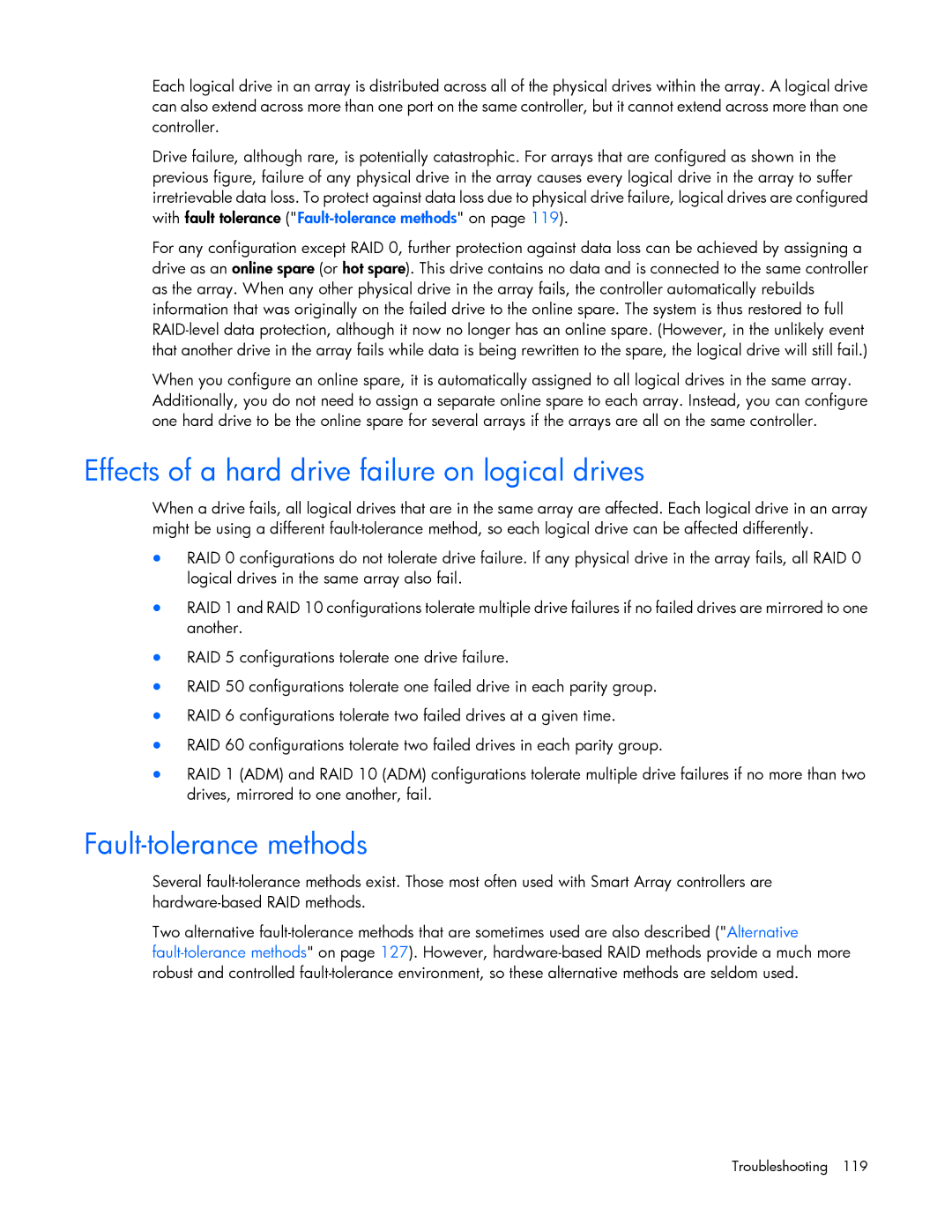Each logical drive in an array is distributed across all of the physical drives within the array. A logical drive can also extend across more than one port on the same controller, but it cannot extend across more than one controller.
Drive failure, although rare, is potentially catastrophic. For arrays that are configured as shown in the previous figure, failure of any physical drive in the array causes every logical drive in the array to suffer irretrievable data loss. To protect against data loss due to physical drive failure, logical drives are configured with fault tolerance
For any configuration except RAID 0, further protection against data loss can be achieved by assigning a drive as an online spare (or hot spare). This drive contains no data and is connected to the same controller as the array. When any other physical drive in the array fails, the controller automatically rebuilds information that was originally on the failed drive to the online spare. The system is thus restored to full
When you configure an online spare, it is automatically assigned to all logical drives in the same array. Additionally, you do not need to assign a separate online spare to each array. Instead, you can configure one hard drive to be the online spare for several arrays if the arrays are all on the same controller.
Effects of a hard drive failure on logical drives
When a drive fails, all logical drives that are in the same array are affected. Each logical drive in an array might be using a different
•RAID 0 configurations do not tolerate drive failure. If any physical drive in the array fails, all RAID 0 logical drives in the same array also fail.
•RAID 1 and RAID 10 configurations tolerate multiple drive failures if no failed drives are mirrored to one another.
•RAID 5 configurations tolerate one drive failure.
•RAID 50 configurations tolerate one failed drive in each parity group.
•RAID 6 configurations tolerate two failed drives at a given time.
•RAID 60 configurations tolerate two failed drives in each parity group.
•RAID 1 (ADM) and RAID 10 (ADM) configurations tolerate multiple drive failures if no more than two drives, mirrored to one another, fail.
Fault-tolerance methods
Several
Two alternative
